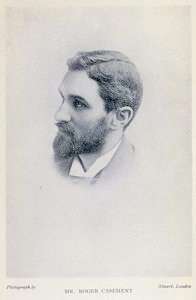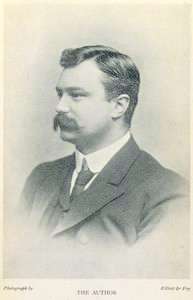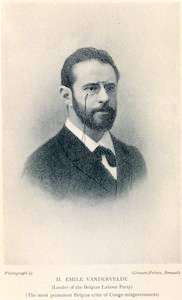Casement Report

The Casement Report was a document of 1904 written by the British diplomat Roger Casement (1864–1916), detailing abuses in the Congo Free State which was under the private ownership of King Leopold II of Belgium. This report was instrumental in Leopold finally relinquishing his private holdings in Africa. Leopold had had ownership of the Congolese state since 1885, granted to him by the Berlin Conference, in which he exploited its natural resources (mostly rubber) for his own private wealth.
Publicity 1895–1903

For many years prior to the Casement Report there were reports from the Congo alleging widespread human rights abuses and exploitation of the native population. In 1895, the situation was reported to Dr Henry Grattan Guinness (1861–1915), a missionary doctor. He had established the Congo-Balolo Mission in 1889, and was promised action by King Leopold later in 1895, but nothing changed. H. R. Fox-Bourne of the Aborigines' Protection Society had published Civilisation in Congoland in 1903, and the journalist E. D. Morel also wrote several articles about the Leopoldian government's behaviour in the Congo Free State.
On 20 May 1903 a motion by the Liberal Herbert Samuel was debated in the British House of Commons, resulting in this resolution: ".. That the Government of the Congo Free State having, at its inception, guaranteed to the Powers that its Native subjects should be governed with humanity, and that no trading monopoly or privilege should be permitted within its dominions, this House requests His Majesty's Government to confer with the other Powers, signatories of the Berlin General Act by virtue of which the Congo Free State exists, in order that measures may be adopted to abate the evils prevalent in that State."[1]
Subsequently, the British consul at Boma in the Congo, the Irishman Roger Casement was instructed by Balfour's government to investigate. His report was published in 1904, confirmed Morel's accusations, and had a considerable impact on public opinion.
Casement met and became friends with Morel just before the publication of his report in 1904 and realized that he had found the ally he had sought. Casement convinced Morel to establish an organization for dealing specifically with the Congo question. With Casement's and Dr. Guinness's assistance, he set up and ran the Congo Reform Association, which worked to end Leopold's control of the Congo Free State. Branches of the association were established as far away as the United States.
The report

The Casement Report comprises forty pages of the Parliamentary Papers, to which is appended another twenty pages of individual statements gathered by Casement as Consul, including several detailing grim tales of killings, mutilations, kidnappings and cruel beatings of the native population by soldiers of the Congo Administration of King Leopold. Copies of the Report were sent by the British government to the Belgian government as well as to nations who were signatories to the Berlin Agreement in 1885, under which much of Africa had been partitioned. The British Parliament demanded a meeting of the fourteen signatory powers to review the 1885 Berlin Agreement. The Belgian Parliament, pushed by socialist leader Emile Vandervelde and other critics of the King's Congolese policy, forced a reluctant Leopold to set up an independent commission of enquiry. Its findings confirmed Casement's report in every detail. This led to the arrest and punishment of officials who had been responsible for murders during a rubber-collection expedition in 1903 (including one Belgian national who was given a five-year sentence for causing the shooting of at least 122 Congolese natives).
Reform by 1912
Despite these findings, Leopold managed to retain personal control of the Congo until 1908, when the Parliament of Belgium annexed the Congo Free State and took over its administration as the Belgian Congo. However the final push came from Leopold's successor King Albert I, and in 1912 the Congo Reform Association had the satisfaction of dissolving itself.
References
- British Parliamentary Papers, LXII. (1904, Cd. 1933).
- Casement Report (1904).
- Dudgeon, Jeffrey (2002). Roger Casement: The Black Diaries with a Study of His Background, Sexuality and Irish Political Life. Belfast. ISBN 0-9539287-2-1. Includes 1903 diary.
- Gondola, Ch. Didier (2002). The History of Congo. Greenwood Press: Westport, CT.
- Ó Síocháin, Séamas and Michael O’Sullivan, eds. (2004). The Eyes of Another Race: Roger Casement's Congo Report and 1903 Diary. University College Dublin Press. ISBN 1-900621-99-1.
- Ó Síocháin, Séamas (2008). Roger Casement: Imperialist, Rebel, Revolutionary. Dublin: Lilliput Press.